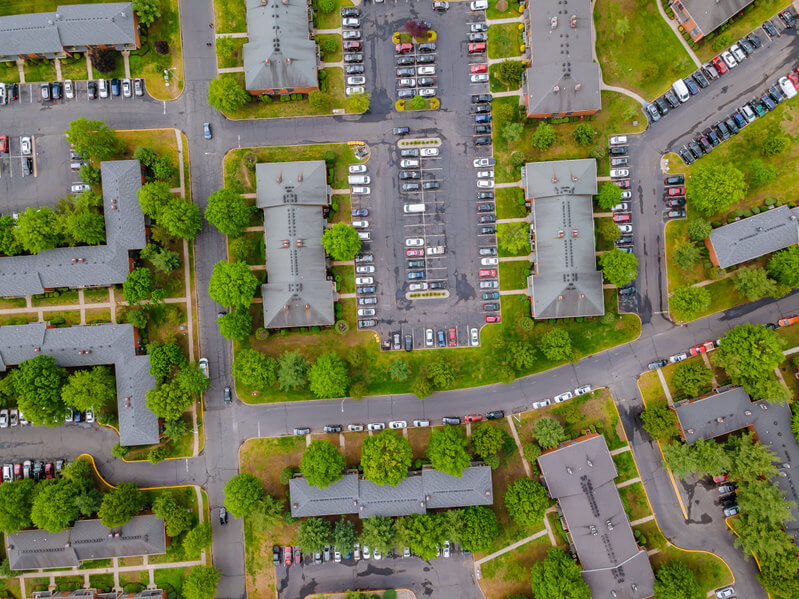Canada needs the equivalent of a war-time mobilization to ensure that all buildings are refurbished no later than 2050 as part of our effort to hit net-zero emission goals, a new report from Efficiency Canada concludes.
The federal, provincial and municipal governments offer a host of programs across the country to subsidize energy retrofits by homeowners and commercial building owners, but that “piecemeal” approach is insufficient to achieve the necessary deep emission reductions, says the report, which was co-authored by Efficiency Canada research director Brendan Haley and energy consultant Ralph Torrie.
The paper advocates “an emergency response to climate change.”
“The climate emergency requires the deployment of zero-carbon solutions at an
unprecedented scale, speed, and level of performance,” the authors say. “This is particularly urgent in the existing buildings where we live, work, play, and convene.”
Canada and the United States are seeing vivid evidence of the catastrophic effects that climate change will wreak if greenhouse gas (GHG) emissions are not quickly reduced this decade and cut to zero by 2050, at the latest. The killer heat wave in British Columbia and Alberta, and the lengthy heat wave and drought in the Western U.S. are consistent with climate modelling and some observed changes in average global temperatures.
With impacts already escalating, the world needs to go on a war-footing to address climate change, and that means abandoning more modest approaches in areas such as building retrofits.
Canada has committed to reduce GHGs by up to 45 % by 2030, and to achieve net-zero emissions by 2050. The use of natural gas to heat buildings accounted for 13% of the country’s emissions in 2019, while consumption of electricity added to that figure.
“We cannot win the war on climate change without transforming our homes and workplaces to be zero emission buildings, and we will not get that done the way we are doing it now,” Torrie said in a blog post.
What is required is a “mission” approach that brings together governments, from all levels, building owners and developers, and the financial sector to map out strategies to set ambitious goals, identify replicable, emission-reduction retrofit solutions, and determine how best to finance them.
They advocate an unprecedented program that could cost nearly $1 trillion over 30 years but would generate savings in terms of greatly reduced carbon emissions and lower fuel and power costs. The report notes that the annual cost of the proposed retrofit program is less than half the $80 billion annual capital expenditure Canadians make in renovating existing buildings. “It’s not out of the range of what we routinely invest and spend on buildings,” says Torrie.
“We cannot win the war on climate change without transforming our homes and workplaces to be zero emission buildings, and we will not get that done the way we are doing it now.”
–Ralph Torrie
The goal would be to reduce the cost of deep retrofits by 50%, dramatically speed up project completion and enhance the value of more efficient buildings for both users and society as a whole. There are a variety of innovation pathways that could increase the ease of retrofitting buildings. These include the use of integrated design and project delivery, prefabrication of building facades and HVAC systems, mass customization tools that manage distinct building characteristics with greater ease, aggregation of retrofit projects into single portfolios, and the increased use of digital technologies. The resulting efficiency gains could eliminate fossil fuel use in buildings while freeing up clean electricity supplies for use in decarbonizing other sectors.
Torrie and Haley acknowledge that the greatest challenge to taking a mission approach is the fact that most buildings are privately owned by individuals and companies who may not see greater energy efficiency as a priority. It would require a full-on national campaign – with greater ease of project management and likely some regulatory incentives – to overcome that challenge.
The authors lay out two scenarios: completing the retrofit of Canada’s 10-million buildings by 2035 or by 2050. The 2035 scenario would require investment of between $40 billion and $60 billion annually, while the 2050 scenario would cost between $20 billion and $32 billion. (By way of comparison, the oil and gas industry generated average annual capital expenditures of more than $45 billion for the past decade.)
“We are at the moment of truth in responding to the climate emergency,” says Torrie. “A building retrofit mission like the one we describe in this report must be part of that response. We can afford it. We cannot afford runaway climate change.”
Shawn McCarthy is an Ottawa-based writer.







